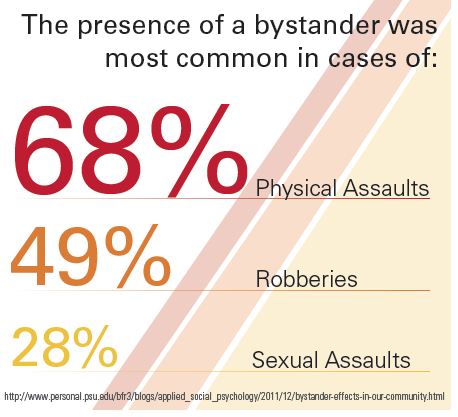Criminology class analyzes the bystander effect
By: ALYSSA MCCUTCHAN
Staff Writer
On April 1, Scott Reno was the subject of an experiment on STLCC’s Meramec campus conducted by Dr. Michael Hepner’s 200 Capstone class. Reno “collapsed” on the floor of the Student Center cafeteria at 8:20 a.m. in order to see how long it took for someone to come to his aid. After four trials, 10 minutes of collapsed time lying on the floor, and 19 bystanders later the results were in. It took an average of three minutes for any one person to stop and check on Reno’s condition.
Hepner’s class walked in to the cafeteria at 8:15 a.m. to set the scene for Reno’s fall. At 8:20 a.m. Reno “collapsed” to the floor near the east wall of the cafeteria, between the cashier and the entrance. The cafeteria had roughly 30 people occupying it at the time of the experiment.
Trial one had the fastest response time of any of the trials. Within 45 seconds of Reno lying on the floor, Meramec student Katie Johnson walked from the other side of the cafeteria to see if Reno was OK. Johnson shared what made her come to his aid.
“One minute I saw him walking around and the next I didn’t,” Johnson said. “You just never know if someone is a seriously hurt or not.”
After Johnson came to Reno’s side, another student was quick to join her to assess the fallen victim.
The results to trial two proved to be much different than the first. The timer for trial two began at 8:24 a.m. A total of seven students passed by Reno with no aid. Three bystanders looked down at the
boy while passing by, while the other four didn’t change their pace or shift their gaze. It was the seventh bystander, whom was female, who decided to revisit the scene after initially walking by with no assistance.
It took three and a half minutes for anyone to check on Reno.
Student Allie Eutimio passed Reno twice without assisting him and she shared her reasoning.
“I just thought it was something weird on campus,” Eutimio said. “I have seen much weirder things here. If it was off campus I would have done something.”
Another male bystander stated his reasoning for not stopping.
“Honestly I didn’t even notice,” the male said.
This experiment was conducted to test the Bystander Effect. The Bystander Effect states that in an emergency situation, the more people there are around the less likely it is for someone to help. No one person feels the need to take responsibility and action according to About Education (psychology.about.com).
“Situation awareness and taking care of the people around you is important,” Hepner said. “People are more likely to pull out their cell phones and take a picture than they are to help. Nobody wants to get involved, they are too self absorbed in their own little world.”
The last two trials had similar results with four to five people walking by before one person would stop to check on Reno.
“It takes two seconds to see if someone is OK,” Johnson said. “You would want someone to do it for you.”











